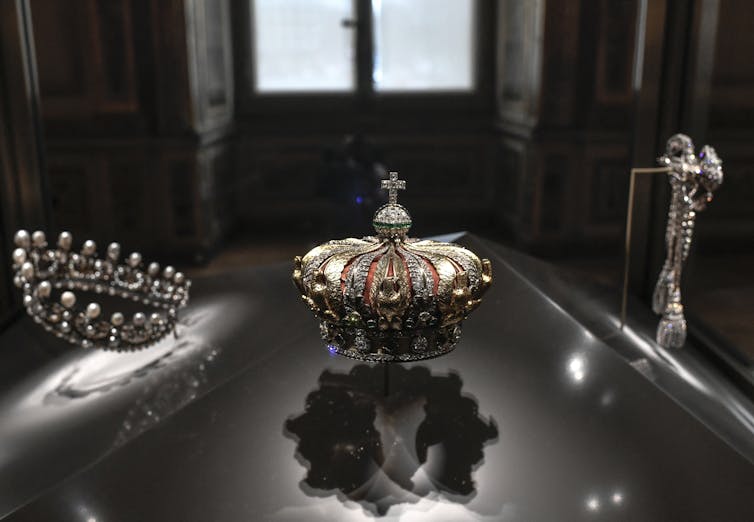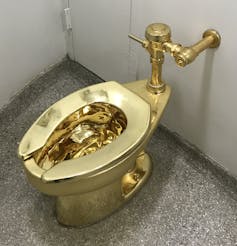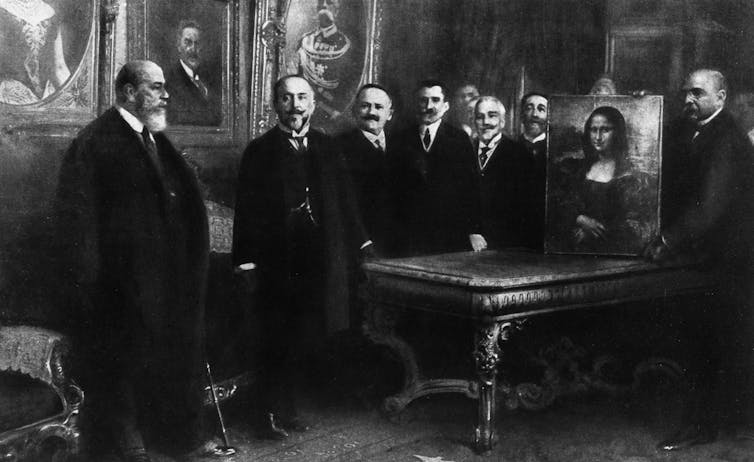The world’s largest art museum, the Louvre has approximately half a million objects in its collection, with about 30,000 on display, and sees on average 8 million visitors per year. That’s big on any scale, with a lot of people and objects to keep watch over. And Sundays are particularly busy.
In a cleverly conceived operation, four men wearing fluorescent vests pulled up at the Louvre in a flat-decked truck at 9.30 Sunday morning. Quickly setting to work, they raised an extendable ladder to the second storey. Climbing it, they cut through a window, entered the Galerie d’Apollon and, brandishing power tools, helped themselves to nine exquisite objects.
The objects taken were France’s royal jewels, formerly belonging to the Empress Eugénie, Napoleon III’s wife and arts patron.
This is where it gets tricky for the thieves: what can you do with these priceless objects? They can’t wear them – too big and glitzy to go unnoticed – and they can’t sell them legitimately, as images are all over the internet.

The best-case scenario, from the thieves’ perspective, is to break them down, melt the precious metals and sell the gems separately.
Empress Eugenie’s crown, which the perpetrators took and subsequently dropped as they fled the scene on motor scooters, contains eight gold eagles, 1,354 brilliant-cut diamonds, 1,136 rose-cut diamonds and 56 emeralds. In short, this amounts to a sizeable stash of individual gems to try and sell.
Timing is everything
For the Louvre, any heist is a major blow. It calls into question their security, both electronic and human. Five security staff were nearby who acted to protect visitors and the alarms did ring, but the entire heist was completed within seven minutes.
Timing is crucial with heists.

In 2019, an 18-karat gold toilet titled America (2016), from the artist Maurizio Cattelan, was stolen from Blenheim Palace, England. It was taken in five and a half minutes. It weighed 98 kilograms and was fully functioning. In other words, the two men who took it (and were later caught and served prison sentences for their crimes) worked quickly and efficiently. At the time of the theft, as gold bullion it was estimated to be valued at A$6 million.
Van Gogh’s painting The Parsonage Garden at Neunen in Spring (1884) was stolen from the Singer Laren Museum, in the Netherlands, during their 2020 COVID closure. It was recovered in late 2023 after an investigation by Dutch art detective Arthur Brand.
The 2017 theft of two Gottfried Lindauer paintings from Auckland’s International Art Centre took just a few minutes to complete. The thieves ram-raided the front window of the auction house where the paintings, valued at NZ$1 million, were displayed. The portraits were recovered five years later through an intermediary, with only minor damage.
Recovering the stolen
The National Gallery of Victoria’s Picasso painting Weeping Woman (1937) was famously taken by the Australian Cultural Terrorists in 1986 – but only noticed as missing two days later.
Recovered just over two weeks later, the painting was left for the gallery staff to collect in a locker at Spencer Street railway station. The motivation behind the theft was to highlight the lack of financial support given to Victorian artists, but the true identity of the thieves remains a mystery.
In 1986, 26 paintings of religious subjects were stolen from the gallery at the Benedictine Monastery at New Norcia, Western Australia.
The thieves were poor planners: they hadn’t factored in that three men and the stash of paintings couldn’t fit into a Ford Falcon. The paintings were cut from their frames, ostensibly butchered. One was completely destroyed. The thieves were caught and charged.
Where to next for the thief?
Recovery of objects from heists is low. It’s impossible to put a number on but some say art recoveries globally are possibly as low as 10%.
Paintings are more difficult to sell on – you can’t change their physical appearance to the point of not being recognised.
However, with objects such as the gold toilet or jewels, the precious materials and gems can be repurposed. Time will tell if the Napoleonic jewels will be recovered.
Never say never. The Mona Lisa (1503), undoubtedly the main attraction at the Louvre, was stolen in 1911 and recovered two years later. The thief, Vincenzo Peruggia, was an Italian handyman working at the Louvre and was caught trying to sell it.

This latest heist at the Louvre highlights the vulnerability of objects in public collections. The irony being they’re often gifted to such institutions for safekeeping.
Those who guard objects are usually paid a minimum wage and yet they are tasked with a huge responsibility. When budget cuts are made, it’s often security staff that are reduced – such as the Art Gallery of New South Wales’ announcement just last week.
The thieves on Sunday knew what they were after and why. We aren’t privy to their motivation. We know the stolen jewels are part of France’s history and are irreplaceable. Their theft denies visitors of experiencing them individually for their beauty and craftsmanship, as well as collectively within the context of France’s history.
But part of me can’t help thinking how the French were partial to helping themselves to artworks and precious objects belonging to others. So perhaps this could be a case of déjà vu.
Penelope Jackson’s Unseen: Art and Crime in Australia (Monash University Publishing) will be published in December 2025.
Penelope Jackson does not work for, consult, own shares in or receive funding from any company or organisation that would benefit from this article, and has disclosed no relevant affiliations beyond their academic appointment.
This article was originally published on The Conversation. Read the original article.







